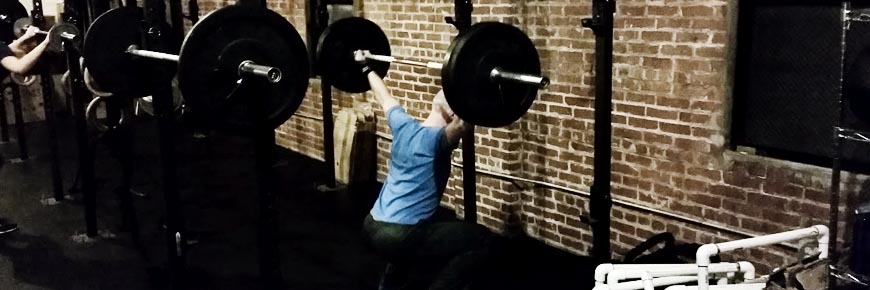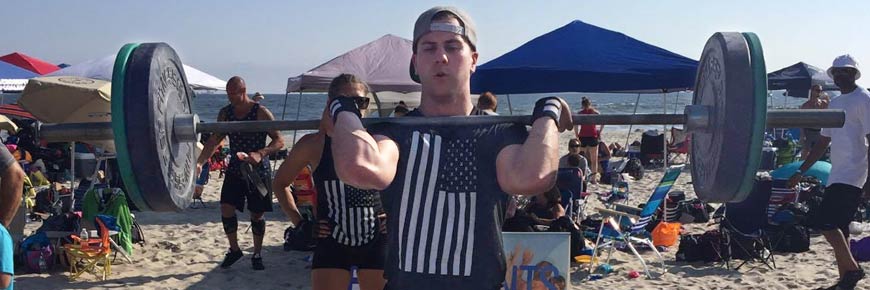Strength
Deadlift: 3×3 @ 90% of 1RM
then
Back Squat: 1RM (re-test)
Helpful Info
Are you working out hard at the gym but feel like you aren’t seeing the results you’re looking for? Before you get too frustrated about your current progress, try some of these tweaks to up your nutrition game.
1. FIBER UP
Fill up your plate with foods that are high in fiber. Fiber helps to prevent surges in blood glucose because it slows the absorption of sugar. Fiber-rich foods contain bulk and often require you to chew a bit more to break them down, giving your body more time to process those feelings of satisfaction, and keeping you fuller for longer. Foods high in fiber are nutrient-dense and often lower in calories and higher in volume than other foods. Examples include apples, raspberries, blackberries, pears, beans, lentils, split peas, artichokes, broccoli, brussels sprouts, cabbage, avocados, nuts, and seeds.
2. GO WHOLE
Focus on eating foods in their whole form. It is easy to fall into a routine with food, and succumb to the convenience factor of eating out or grabbing food in a package. While pre-packaged foods may fit into your calorie goals, they are often highly processed—and your body doesn’t have to work as hard to break them down. Compared to refined foods, real foods are more satisfying. Set boundaries on eating foods out of ease (read: granola bars, cereals, chips) this can also help eliminate boredom and stress eating.
3. POWER UP THE PROTEIN
Space your protein intake out during the day to ensure you are maximizing your body’s utilization of amino acids. Protein is particularly high in the amino acid leucine, which research has shown may be one trick to shedding body fat. It takes eating about 25-35 grams of protein every 4-5 hours to get enough leucine to see a positive effect. So don’t skip that mid-afternoon protein snack! Cottage cheese, Greek yogurt, hard-boiled eggs, tuna and chicken salad are great go-to high-quality protein sources of fuel.
4. GUZZLE WATER
Aim to drink at least half of your body weight in fluid ounces plus 30 additional ounces for every hour you exercise. Fluids help to fill you up, too, so try drinking a full glass or two of water while you are cooking dinner and before you sit down to eat your meals. Carry a water bottle around with you to keep fluids on the top of mind. It’s easy to forget to drink water if you don’t have that visual reminder. Stick to water, unsweetened iced tea, green tea or lemon- and herb-infused water to meet your goals.
5. ADJUST CALORIE GOALS
As you lose weight, it is important to reevaluate your nutrition goals. While you’re still the same height, you’re carrying less weight around, so you have less body to feed. A dip in metabolic burn is normal with weight loss, so to continue to to see the numbers trend down, you will need to adjust how many calories you’re eating. This is an art. Re-evaluate your current workout schedule, basal metabolic rate and daily activities to form your new calorie goals—you can always update your new weight in MyFitnessPal for the guided calorie recommendation.
6. ELIMINATE EMPTY CALORIES
Sure everything in moderation, including moderation, right? While we all should enjoy the finer things in life (like wine and chocolate), it’s easy to get super relaxed and not realize how many days of the week we are indulging. This approach to eating can work for weight maintenance, but if you’re stuck in a plateau, it’s time to take an assessment of your treats. Count up all those cocktails, late-night desserts, chocolate from the office candy jar and specialty coffee drinks. For the time being, reduce the number of sweets you have each week to give your body that kick start again.
7. GET ACCURATE
If you are currently entering your food into MyFitnessPal, make sure that you are doing so accurately. Use the recipe feature to add recipes, and tailor them to your goals. Break out the measuring cups and spoons to make sure you are entering proper portions. If you have a digital food scale, use it—especially for measuring proteins and starchy vegetables like potatoes and fruit. Don’t know what a medium apple looks like? Most people don’t, so weigh it to get a better idea of the size of the apples you buy. When comparing apples to apples, calories can vary greatly.
8. ADDRESS FOOD SENSITIVITIES
It’s not uncommon to be carrying around extra fluid weight if your body is chronically inflamed from the foods you are eating. Common symptoms of food issues are gas, bloating, nausea, diarrhea, constipation, fatigue, joint pain and brain fog. If you’re experiencing any of these symptoms on a regular basis, it might be worthwhile to talk with your doctor or registered dietitian about a diet analysis. There are special blood tests that can determine food sensitivities, and can be helpful in alleviating discomfort while reducing inflammation and excess weight.
If you’re stuck in a weight-loss plateau, give a few of these tried and true nutrition tweaks a try!
Taken from http://blog.myfitnesspal.com/8-nutrition-tweaks-to-try-if-youve-hit-a-weight-loss-plateau/








